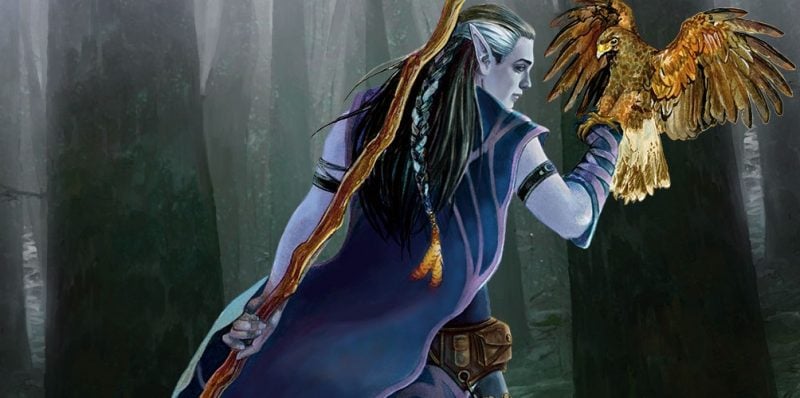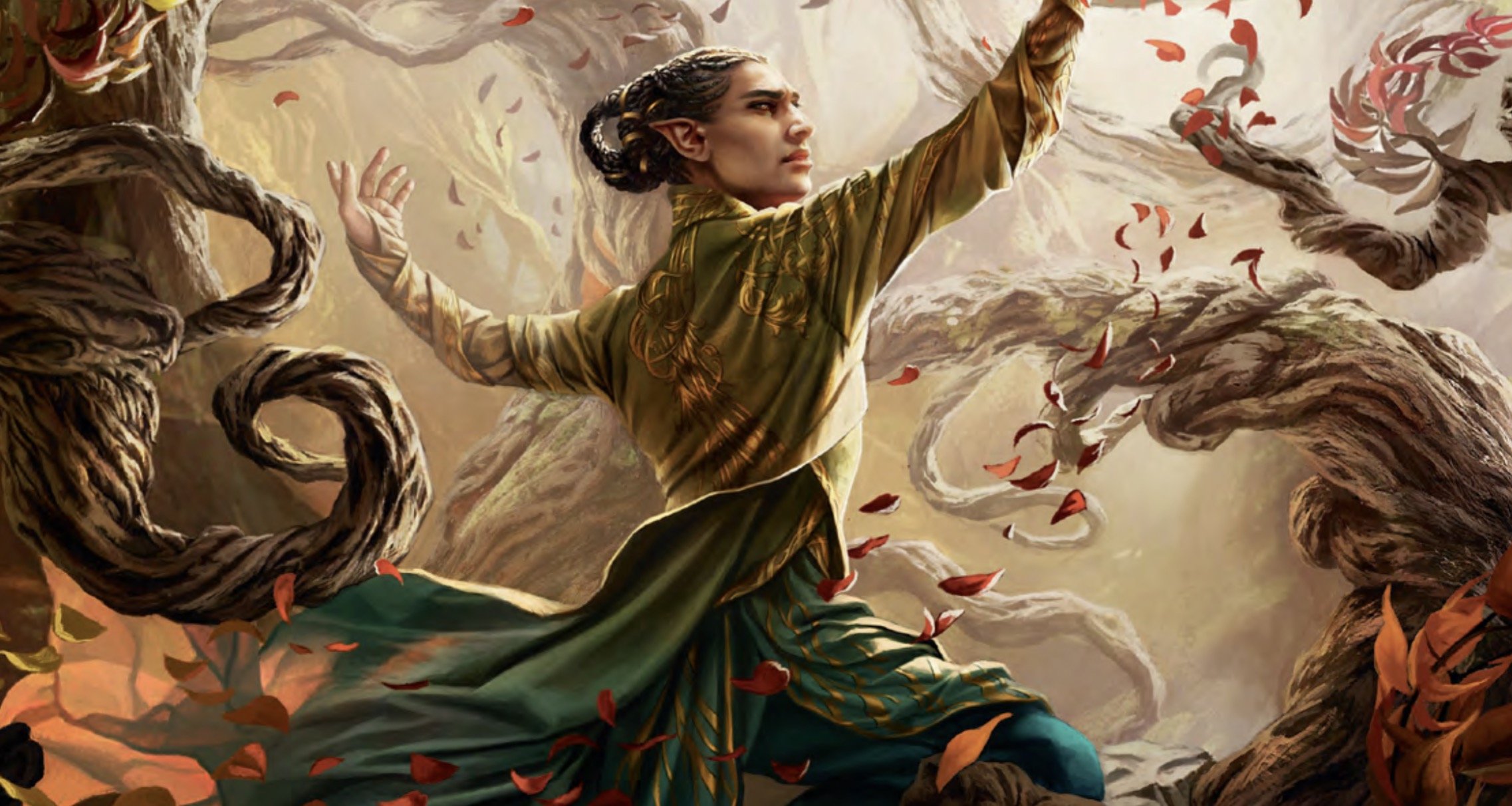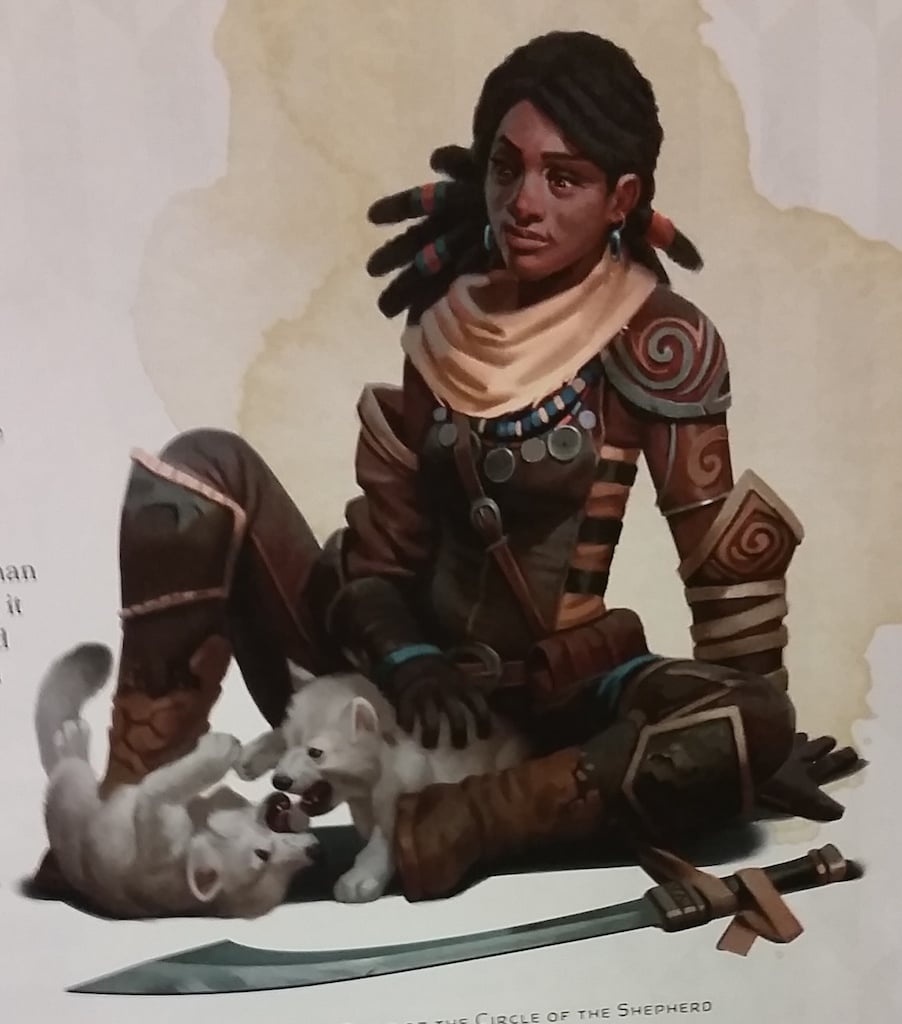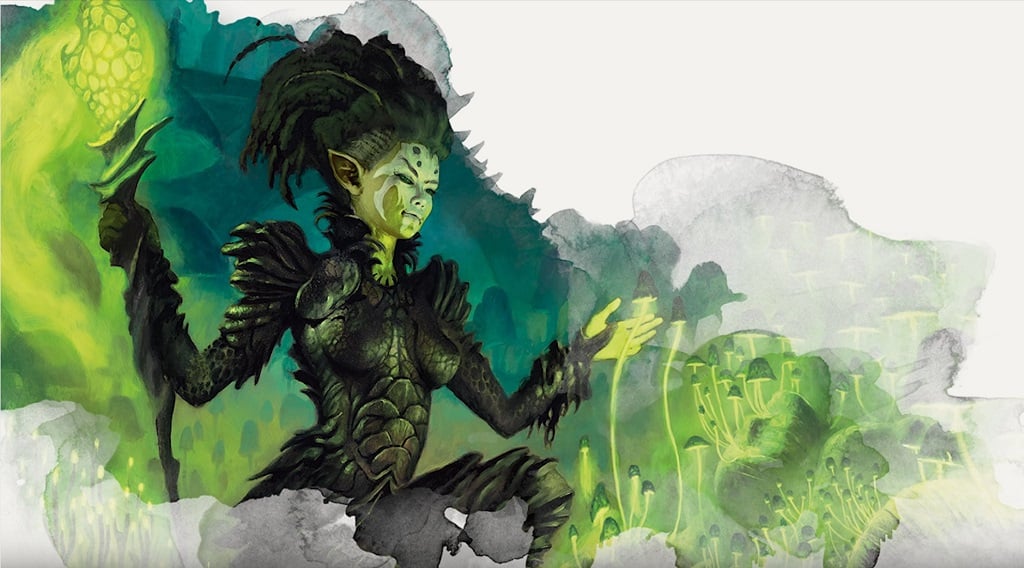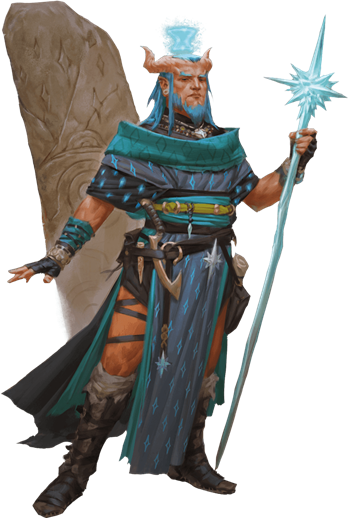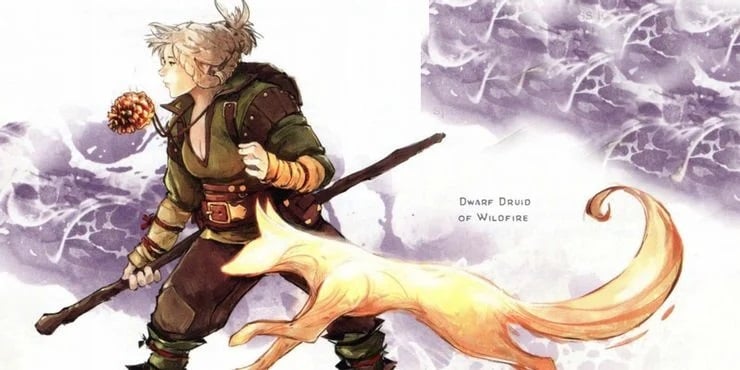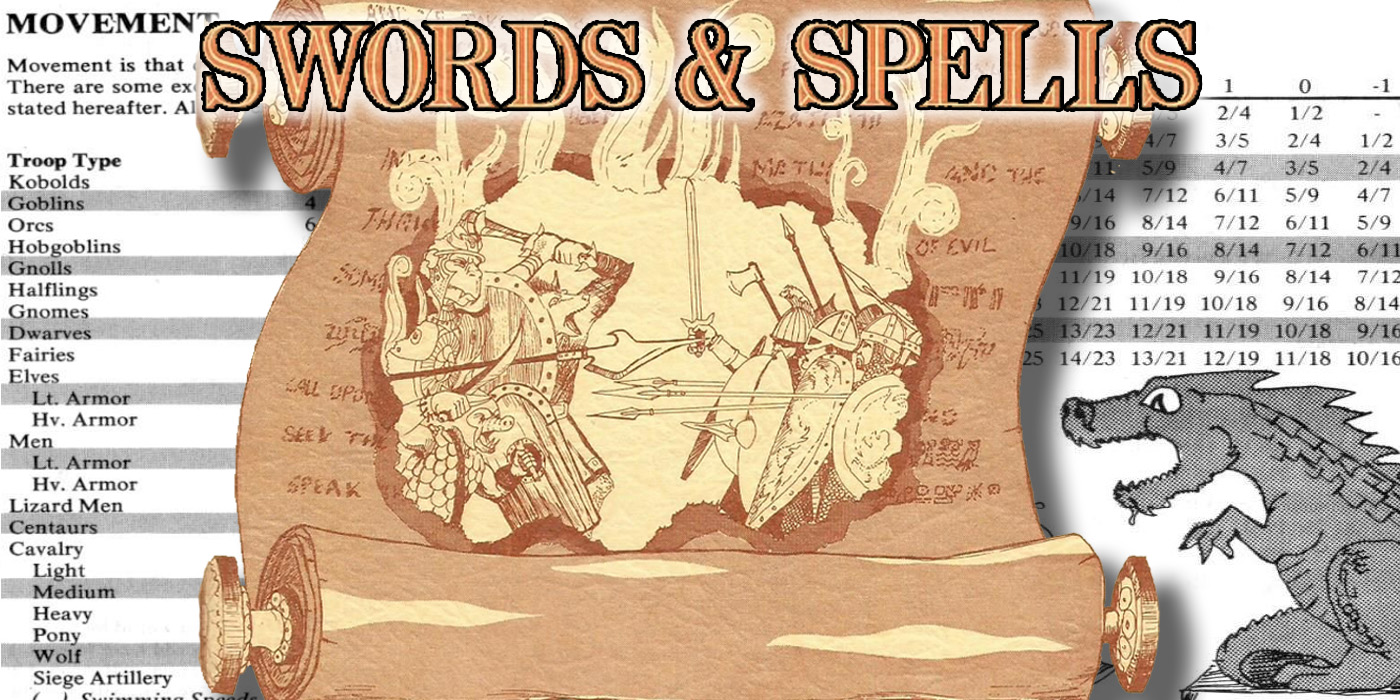D&D 5e Guide – How to Play a Druid
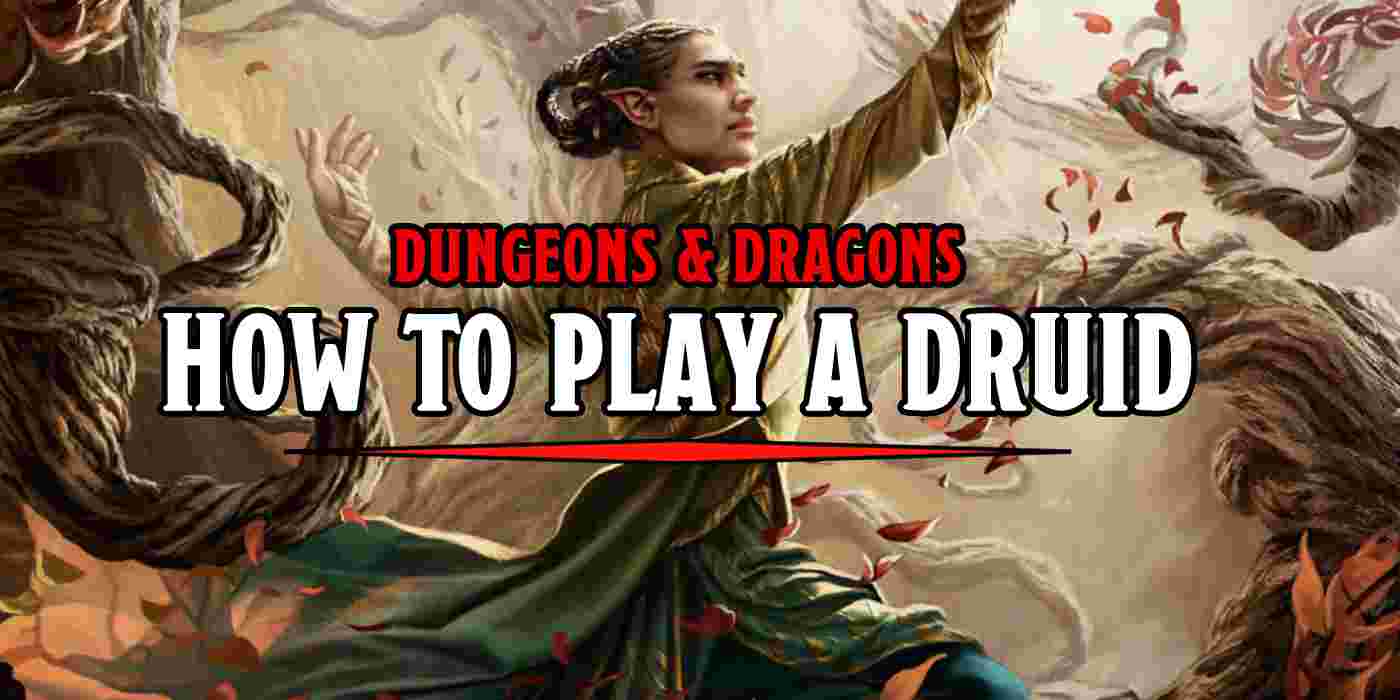
5E Druids are some of the most versatile, powerful classes. With this helpful guide, you’ll unlock their potential and be a master druid yourself.
Druids can do it all in D&D. They’re one of the most flexible classes, capable of handling just about everything: they can heal, they can cast spells both offensive and defensive, they can fight in a melee… there’s very little a Druid can’t do. A party of five different Druids might be able to fill out a whole party, no other classes required.
In essence, a 5E Druid can fill almost any role in a party. And the secret to that flexibility lies in their spells and their subclasses. Their Druid Circles can change playstyles dramatically. You might go from being a ferocious bear warrior, to summoning hordes of animal friends to destroy your enemies.
Playing a Druid can be an absolute blast. And this no-fear Guide to playing a Druid in Dungeons & Dragons will help you master nature and be your best bear.
To start with, it helps to know your two biggest tools: Wildshape and Spells.
Spells For Days
Druids have some of the strongest spells in the game. If you’re playing a 5E Druid, your strength comes in a few different ways.
Druid spells are at their best when dramatically altering an encounter. And they can do this early on. Spells like Entangle and Spike Growth hit a wide area of effect. And with your party ready to pounce, can set up victory by pinning down tricky enemies or making it so that only the enemies you want to engage you can engage you.
Druids can also heal injured comrades, buff up their allies, and have damaging effects to dish out. It just takes time and careful planning. But with the right spell load out, you can have a Druid ready to do just about anything.
Which Spells to Pick?
Here’s a quick list of some of the better spells by level, but feel free to play around:
- Cantrips
- Produce Flame
- Shillelagh
- Guidance
- 1st Level
- Entangle
- Goodberry
- Faerie Fire
- 2nd Level
- Pass Without Trace
- Spike Growth
- Heat Metal
- 3rd Level
- Conjure Animals
- Aura of Vitality
- Sleet Storm
- 4th Level
- Polymorph
- Conure Minor Elementals
- Watery Sphere
- 5th Level
- Transmute Rock
- Wall of Stone
- Commune with Nature
- 6th Level
- Bones of the Earth
- Sunbeam
- Heal
- 7th Level
- Plane Shift
- Whirlwind
- Reverse Gravity
- 8th Level
- Animal Shapes
- Tsunami
- Antipathy/Sympathy
- 9th Level
- Shapechange
- Foresight
- Storm of Vengeance
That Shape, Man It’s Wild
Wild Shape may be one of the most underrated tools in a character’s toolbox. It allows a Druid to transform into an animal for an hour or so per use. There are a few tricks you’ll need to learn to know when to transform, though.
Generally, you’ll want to use this ability when you want to:
- give yourself an edge during a tough fight
- get somewhere that would be hard for you as a person
- express yourself
There are some basic tricks to help you get an edge in combat. For one, when you transform via Wild Shape, you gain the statistics and hit points of the animal you transform into.
So if you change into something with a lot of hit points, say a bear, you’ll gain an extra pool of hit points on top of your own. No damage touches you until you lose the last of your bear hit points.
And since you can Wild Shape twice per rest, it’s hard to burn through those extra hit points. But Wild Shape lets you do so much more than survive combat.
You can (eventually) take to the skies as a bird, hide undetected like a mouse, or become a creature that swims (and breathes) through the water. Become something with a climb speed in order to ascend or descend without danger.
The world is your oyster with a 5E Druid. Escape imprisonment, spy on your enemies–whatever you can think of, there’s an animal that can do it for you. If you need some inspiration, go watch nature specials.
Finally, Wild Shape is an excellent tool to use in roleplay-heavy scenes. It’s one thing to have your character sulk, but imagine if they transform into a cat and then go sulk in the corner.
Or if when they’re eating, they transform into a snake to swallow a big meal whole. Or to express affection by turning into a friendly dog. It’s one of the more unique options available to your character, and it’s a shame to miss this opportunity.
One thing to be aware of: you can’t cast spells in animal form. Well, at least not until 18th level. But you can keep concentrating on spells you cast before you shapeshift.
And Druids have some excellent concentration spells. So, you can keep a Moonbeam or Call Lightning going while you turn into a wren to escape enemy reach.
Circling Up
As we said, the Subclass you choose alters the way you’ll use your core abilities.
The Circle of Dreams is a new one that was introduced in Xanathar’s Guide to Everything. It transforms 5E Druids into the ultimate party support class.
Make no mistake, they’re no slouch in combat. They can do so much more than heal. And while they’re doing everything else, they can also heal targets. They get a fantastic healing ability that triggers a bonus action and is totally usable while Wild Shaped.
Choose this subclass if you want to be the ultimate healer for your party.
Circle of the Land Druids are Spellcasters through and through. Most of their abilities revolve around their spells.
The two biggest benefits to this subclass are adding additional spells to their lists and the ability to regain spell slots after even a short rest. Between their spells and Wild Shapes, these 5E Druids are a front of mystic power.
These Druids specialize in having the right tool for the job, whether a powerful spell or an animal shape. They gain situational benefits when they’re in nature. But their spell power affords them excellent flexibility, too. 5E Druid spells tend towards battlefield control instead of out-and-out damage. Still, you’ll find yourself surprised.
Circle of Land Druids are a great play if you always want to have the right tool for the job.
Druids of the Circle of the Moon are the classic shapeshifting 5E Druids. If you want to play a character who spends their time fighting as an animal, this is the way to go.
Choosing this class makes combat Wild Shape a bonus action, and it eases the restrictions on Wild Shape or the ability to become elementals. These 5E Druids are excellent brawlers, meaning they can take and deal surprising amounts of combat damage.
They’re at their best when in the middle of a fight, so if you pick one, look for spells that can complement that. They do well when picking spells that hamper opponents, locking them near the Druid’s bestial form.
Play a Circle of the Moon Druid if you really want to explore your shapeshifting abilities before a good brawl.
Druids from the Circle of the Shepherd are masters of spirits and animals alike. They turn a 5E Druid’s spellcasting from a general toolkit to one focused on summoning.
This, combined with their Spirit Totem ability, makes them excellent at providing more combat-oriented support. They’re capable of using their bonus action to buff allies by either granting temporary hit points, extra healing, or an advantage. That last one will cost your reaction, though.
They can conjure allies, buff the party, and even support their summoned creatures at no extra cost at higher levels.
This is another supportive role for the Druid in your party that wants versatility, especially in combat.
For 5E Druids of the Circle of Spores, life is an interesting one. This subclass transforms your Wild Shape ability into a battle transformation that leaves you humanoid, but surrounds you with an aura of damaging spores.
If you want to swing a sword and cast those powerful Druid spells, this is a fantastic subclass to pick. It deals a ton of damage constantly, so with each turn, you’ll feel like you’re accomplishing something.
Pick this subclass if you want to wield your spells, but you don’t want to give up the sword.
Circle of Stars Druids take the idea of reimagining Wild Shape even further. They transform into a “starry form”, where they’re streaked with radiant cosmic light and patterns of constellations.
This allows them to decide whether to focus on making attacks, restoring hit points, or concentrating on spells better. This is very much a magic-centered druid subclass.
Go with a Circle of Stars Druid if you want to use a lot of magic and be really, really shiny.
Finally, the Circle of Wildfire is for 5E Druids who want to summon a battle companion. You can use your Wild Shape to summon a wildfire spirit that causes damage to creatures nearby and takes a separate turn (after you).
During this turn, it can shoot bolts of fire or teleport itself and its allies around the battlefield. It’s an unusual Druid for sure, but one for folks looking to be the center of the party.
This is your subclass if you’re looking for a magical pet companion.
As you can see, 5E Druids are all fairly powerful team players. Any of these subclasses can easily be the lynchpin for your party.
Until next time, happy adventuring!

